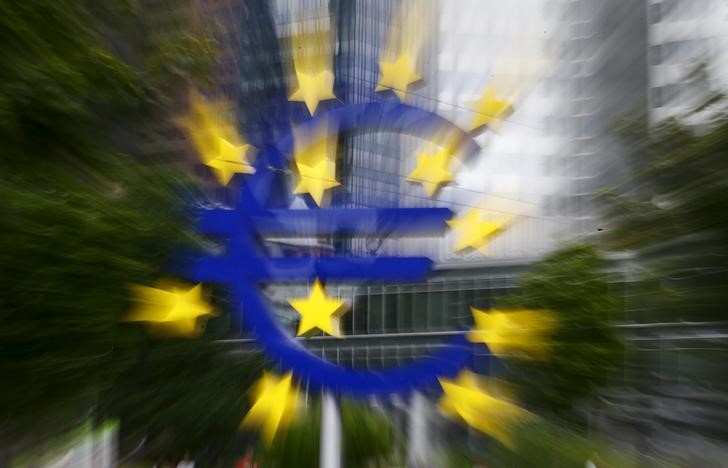By Francesco Canepa and Francesco Guarascio
FRANKFURTBRUSSELS (Reuters) - Euro zone prices fell less in May and corporate lending extended its recovery in April, data showed on Tuesday, giving the European Central Bank some arguments for keeping monetary policy on hold when it meets on Thursday.
The ECB has embarked on a 1.74 trillion euros ($1.94 trillion) money-printing program to revive inflation and growth in the euro zone, but the bank has little to show for it, more than a year since purchase started.
Consumer prices fell in the euro zone by 0.1 percent in May after declining 0.2 percent in April, thanks to a smaller drop in energy prices and an increase in the price of services, Eurostat data showed.
Loans to euro zone companies grew by 1.2 percent in April - the best rate since November 2011 and a touch above the previous month, according to the ECB.
The readings were likely to help the ECB reaffirm its wait-and-see stance at Thursday's meeting. The central bank was also expected to nudge up its inflation forecast for this year and next after a recent stabilization in oil prices.
But the overall economic pictures remained weak. Even excluding energy prices, inflation in the euro zone was just 0.8 percent in May, far from the ECB's target of almost 2 percent.
And growth in loans to households, the biggest consumers of credit in the euro zone and a key driver of its 18-month-old lending recovery, slowed for the first time since February 2015.
"The ECB message on Thursday will be that things seem to be going better," Clemente De Lucia, an economist at BNP Paribas (PA:BNPP), said. "But we start from low levels: inflation remains weak and, with growth just above potential ... downside pressures on prices remain."
The ECB may need to announce as early as September that its program of buying 80 billion euros worth of assets a month will be extended beyond its current end-date in March 2017, De Lucia added.
The bank has already said purchases would continue until inflation reaches satisfactory levels and repeatedly expanded the scope of the program, which from June will include corporate bonds.
Next month the bank will also start paying banks to take its money, provided that they lend it on to the economy.
"As much of the effect of the big March easing package is still in the pipeline, a 'wait and see' stance makes sense," said Holger Schmieding, an economist at Berenberg.
